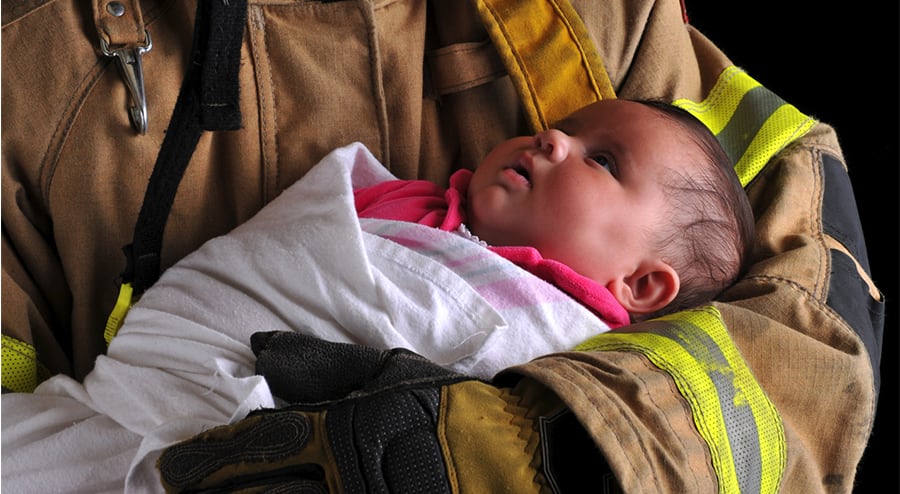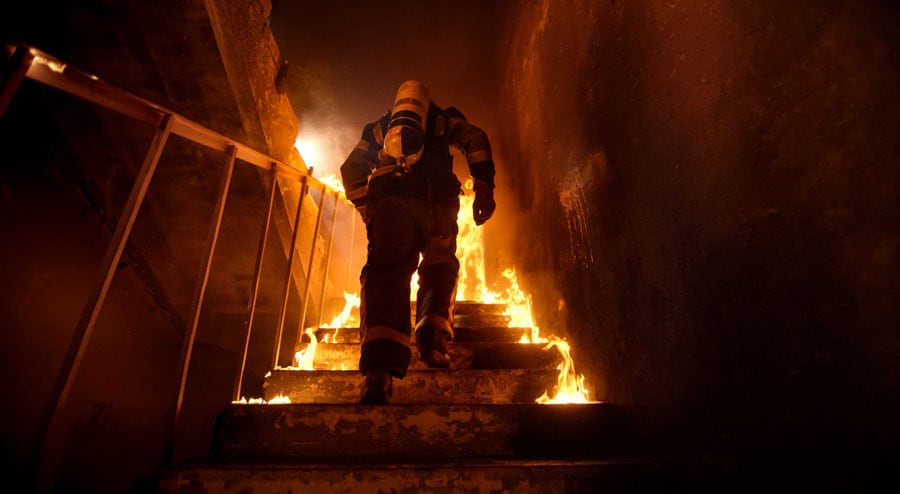Like a carbon monoxide detector, a smoke detector is one of the most important safety devices you could install have in your home and office. A hard-wired smoke detector or battery-operated model will quickly identify when smoke starts to build up in a building. This helps you to get everyone out of a building as soon as possible while being able to take action or to call for help before the situation can get worse.
It is critical that you look at how these detectors might work on your property. But, to make the most out of them, you have to keep them organized in the right places around your home or business. So, thinking about where to place smoke detectors in your property is key. You have to do this, so it becomes easier for you to get more out of your safety plans.
Whether you are protecting a single-family dwelling unit or an enormous office space on numerous levels, you must have the right number of smoke detectors and in the right locations. These must be placed in the right spaces so they will be effective. Your alarms must also be in places where the risk of false readings will be reduced.
The following guide includes details on all the places in your home or business site where detectors should be placed. This is to help you with identifying areas where you need to add extra protection.
Always Use The Ceiling
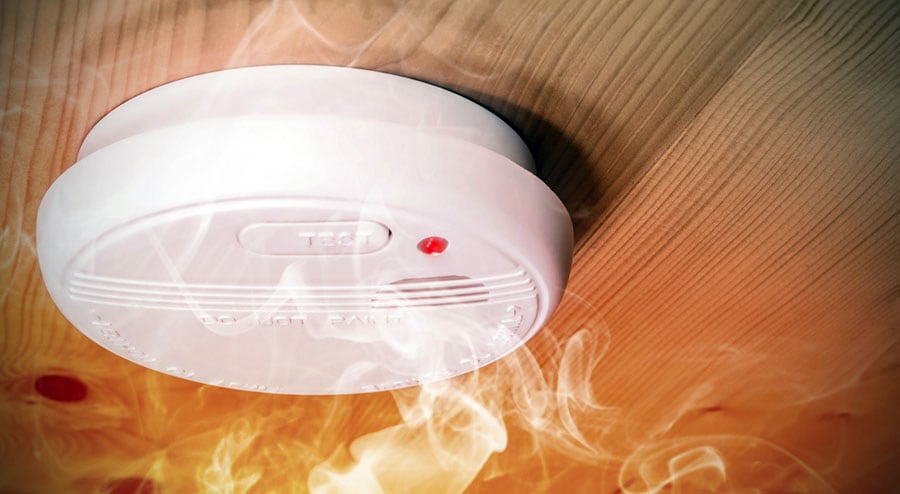
The main rule of thumb for applying detectors in a building is to add them to your ceilings. Place them near doorways if possible. Adding a detector to a ceiling ensures that you have more coverage space to work with.
Also, you should keep any obstructions around your ceiling from getting in the way. Keep the alarm away from lights even if they are newer lights that do not generate all that much heat. Avoid placing alarms near fans as the air produced by such fans would only make it harder for your system to work.
Above-Ground Floors
Start by planning your detectors around the main floors of your building. Add alarms to each floor. The plan is to allow more detectors to interact with each other in a building.
Today’s smoke detection units are linked up to where all units in a property will go off when just one is triggered. Part of this comes from such detectors being capable of identifying the sounds that one unit might produce from a distance. When one goes off, the others will work too. Having alarms on each floor is vital to ensuring everything you install works properly.
Which Rooms?
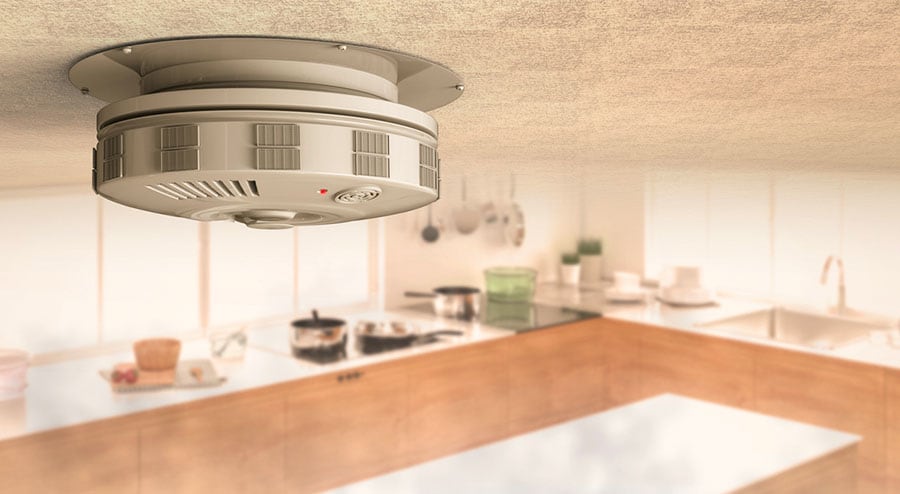
Always add detectors to each bedroom or large meeting space. This is to remind anyone in a home or business about smoke in an area. Such alarms will go into spots where people are more likely to be in.
Add alarms outside of these rooms too. This is to add to the overall coverage area. A wide-open hallway that links many of these rooms together is an ideal space to place a detector.
Any large rooms on a floor should be covered as well. This is perfect for floors where you do not have any individual offices or bedrooms to work with.
On A Pitched Ceiling
You can always get a detector added to a pitched ceiling if you have one. This would be a ceiling that features a slanted side. When getting it ready add the alarm in an area within three feet from the apex. Do not add the alarm near the apex; instead place it about four inches down from the top. Adding the detector into the region will keep it from reading the entire room properly due to the added obstruction that may be produced as the wall has too much space surrounding it.
On A Wall
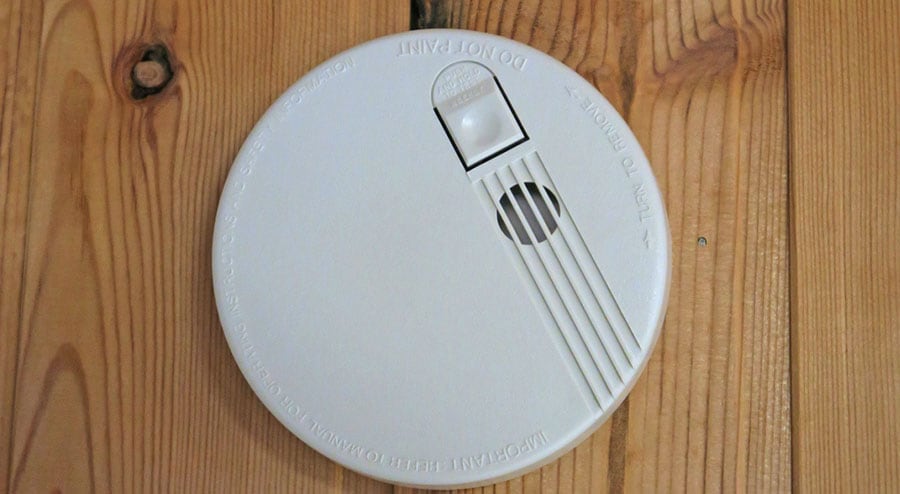
It is best to add a detector to a ceiling, but you could always add one to a wall if needed. Aim to get a detector applied about four to twelve inches from the top of the wall in this case. This is to produce a better range without going too far down in an area where false alarms might be produced.
Adding a detector on a wall helps but you should look at how the layout of that wall is supported too. Place it on a flat wall that is perpendicular to the floor for the best results. This is to give you an extra bit of control over how the detector can find trouble in an area as it will not be positioned far off from any place that smoke might materialize.
In The Basement
You must add a smoke detector in your basement, but you must look at where you will place the alarm. The basement is a space where things like pumps and generators create heat. Keep any detectors in your basement on the opposite end of any heat-generating items in that area. Adding a detector near a staircase is best as it creates a better total layout for your use.
Whatever the case may be, try and keep the detector at least 20 feet away from a water heater, washing machine and dryer and any other heavy-duty items in your basement. Prevent the risk of false alarms by watching how well the detectors are placed in this part of the home or business.
What About The Garage?
It is best to avoid placing detectors inside a garage. The emissions produced by a vehicle will trigger an alarm if a detector is inside the area.
You can always add a smoke detector near the door that leads to your garage. This could be placed there to maximize protection. Any activities that might take place in your garage should be controlled without risking problems over the emissions or other gasses in that area from entering your home. However, the alarm should go near that door to remind people of any serious threats that might be emanating from the garage.
Avoid Drafty Areas
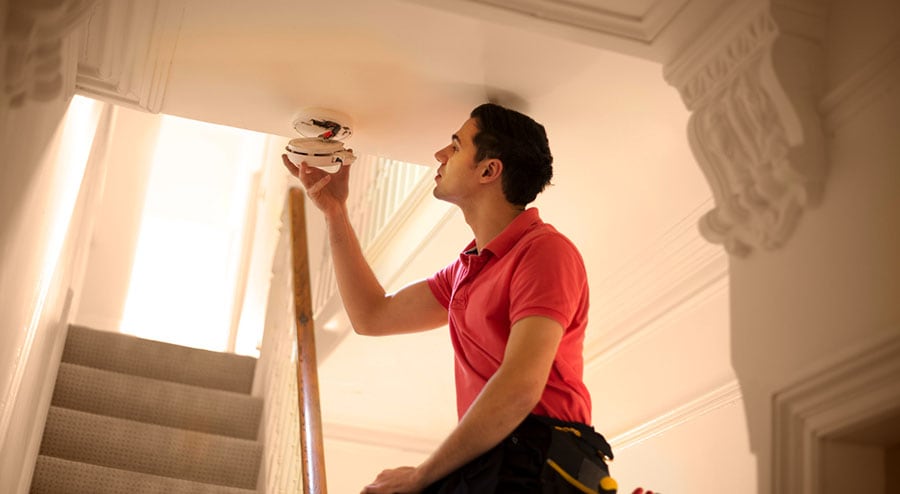
There are many places in a building like windows and air ducts that might produce air drafts. These make it harder for the smoke to be identified. Avoid adding any alarms near these areas. Keep your detectors in places where they can identify smoke without outside air making detection more difficult.
Keep Away From Appliances
Keep your detectors at least ten feet away from any heat-producing appliances. This is especially vital for when you are looking to add a detector to a kitchen. False alarms are more likely to be produced if you place an alarm near one of these appliances.
How Many In A Room?
One alarm is typically all you need to have in a single room. But you could always add a second alarm if the room in question is expansive. For example, a car dealership could have two or three alarms in a massive indoor showroom with tall ceilings and hundreds of feet of space all around. Meanwhile, an individual office in such a place only needs just one alarm to work.
Whatever the case, keep the alarms far from one another. Keep them at least 20 feet away from each other if you have many of them in the same room. This keeps the alarms from becoming redundant.
Make Sure Everything Is Compatible
No matter where you plan on placing your smoke detectors, you must ensure that are compatible with one another. Each alarm should interact with each other to produce a building-wide alarm if one sensor goes off.
Look to use the same type of detector throughout your entire building. The same brand and model should be used on everyone to see that your detectors are working.
Check All Batteries
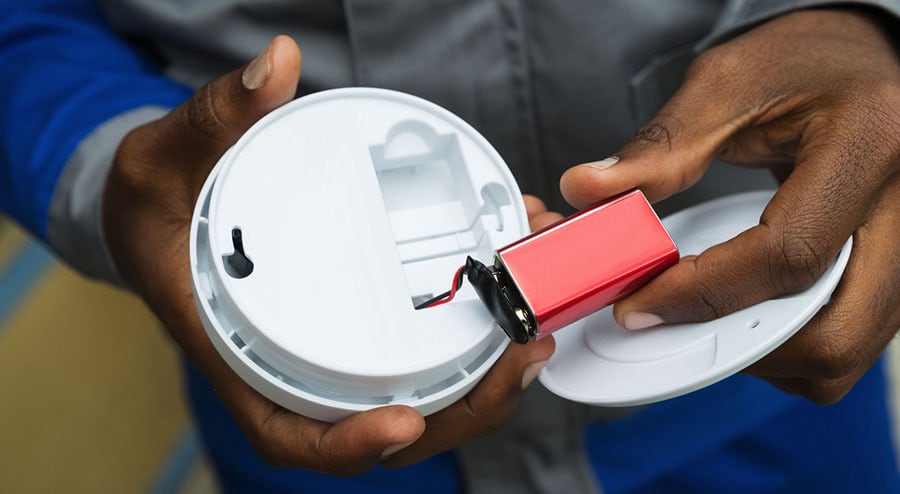
Do not forget to check how the batteries on the detectors work. Test each detector you have every month to ensure they work properly. You might have to replace the batteries in whichever detectors are not working properly. Regular testing ensures that everything in your home or office is working according to plan.
Review The Paint
Check for any paint jobs applied to any walls or other places around an area, too. Any area that has been painted and is not going to require any new paint in the future is a good area to add a detector. Fresh paint might keep a detector from working properly. The detector will stay strong when the paint has settled in and is fully dry.
On a related note, if there is wallpaper check the surface. The detector should not be placed near peeling wallpaper surfaces it might disrupt the overall range of the unit.
Make sure there are enough smoke detectors around your home or office. Get enough of them to fit in all the rooms and areas that you need to have them installed. Check out how they are placed, too, as you want to make sure that everything is set up properly and will do its job as and when it is needed to protect you and your family and ensure peace of mind.


